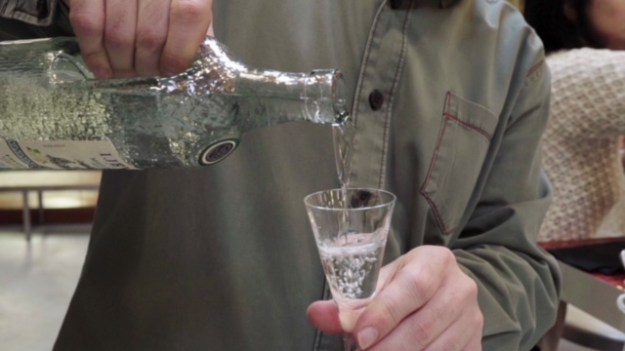
In Armenia appetizers are a really big deal. Mezze, as Armenians refer to the starter course, may consist of stuffed grape leaves, hummus and crudité, cheese, stuffed eggplants, falafel balls, spinach and feta pastries, and other Mediterranean delights.
Restaurants across Armenia serve these starters, but if you can somehow swing it, try to experience the local cuisine at a local’s table.
There your meal will start before the mezze are brought out. There’s a system of sorts, as the courses include not just food, but beverages as well, explains Melkon Khosrovian, an Armenian currently living in Los Angeles. Khosrovian and his wife, Litty Mathew, operate Greenbar Distillery, which boasts that it is the “world’s largest portfolio of organic spirits.”
First things first: How can you ensure you get a coveted invitation from a local Armenian when you visit the region? It starts with coffee.
According to Khosrovian, visitors to Armenia need simply to extend a friendly hello to the local people encountered on their travels and an invitation to coffee will follow. That coffee will turn into snacks, and snacks will turn into dinner, and with each morsel of food, there will be a beverage to pair with it, beginning with the nonalcoholic variety.
In the summer, with temperatures hovering above 80 degrees Fahrenheit but often rising as high as 95 degrees, it’s essential that this be a cooling liquid. As such, Khosrovian says to expect tan (or tahn), a yogurt-based drink served with salt and water or dolled up with cucumber slices and chopped dill.


After the tan, which is to be consumed like water, comes Armenian soda. Green in color from a tarragon infusion, it isn’t like American or Mexican soda. It’s slightly sweet and carbonated and is meant to whet your appetite for the stronger stuff. Of which, if you’re interested, there is plenty to choose from.
Like many Armenian families, Khosrovian’s made moonshine, because they needed something to do with all of the fruit their land produced. “Everyone grew fruit, and when you had too much, you made jams with it, you made alcohol with it. And that’s one of the first things that you’ll be served when you visit someone’s home later in the afternoon or in the evening or if you go out into one of the restaurants in town.”
But moonshine isn’t the only type of alcohol you’ll find in Armenia. There’s flavored vodka, brandy, and wine, and there is an etiquette surrounding it all. Most important of all is the toastmaster. Armenians take this custom pretty seriously.
Much like their approach to food, Armenians’ drinking culture is done family style. When guests sit down to a meal, all beverages—both non-alcoholic and alcoholic—are available. Guests can choose what they like to “pair with a dozen or more appetizers,” Khosrovian explains. People who are “extra-thirsty” will start with tan, then have soda or mineral water before switching to oghi (booze) as heartier main courses are served.
Khosrovian says that people don’t just “drink whenever [they] feel like drinking.” There is a ceremony, special occasion or not, led by the toastmaster or the person in the group who “has the best ability to make things sound good and to talk and talk and talk because their job is to control how people drink.”
Khosrovian stresses that it’s a job, albeit one that is intended to “make sure you have the best time you can.”
Indeed, this is the general Armenian vibe. Visit the Eurasian country and you’ll discover a remarkable land and an even more remarkable people. Armenians have proven to be resilient through numerous tragedies and upheaval. Who can begrudge them wanting to ensure they have a good time?